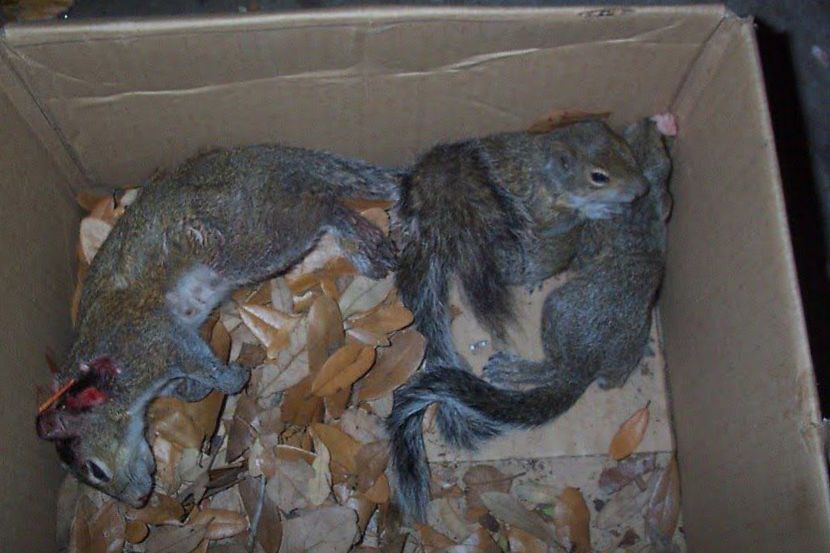
There are actually two main ‘types' of squirrel nest — ones that the squirrels build themselves or ones that they have stolen or taken over. The latter is usually a nest that has already been built by a bird, usually in tree hollows, including woodpecker nests. Nests that squirrels build themselves are often larger in size than bird nests, in some cases as many as two feet across. As you can imagine, a nest of this size would be pretty easy to see, but these comfortable and cosy homes can be as hidden as they are obvious, especially when squirrels start to encroach into human habitats — residential, agricultural, or commercial properties.
If you spot a squirrel on your property, chances are it will be a female squirrel. Females almost always come with a litter of baby squirrels, also known as kittens or kits, and these will be hiding away in a nest for two or three months, until they are old enough to leave and find food of their own. Many squirrel kits, females especially, will stay with their mother in the same nest for up to a year, and will also return to the same (or close) nesting spots that their mothers and grandmothers used. Location information is passed through the generations, a similar approach also taken by female raccoons too.
How to remove a squirrel nest
You can't just grab the nest and run off with it, although that might sound like the nest and fastest approach. We do not recommend this for a number of reasons:
1 - the mother might see and get aggressively defensive over her young family
2 - the mother might not see, may not be able to find he youngsters, and the entire nest could be orphaned once moved
3 - the mother and her kits might just move right back in once your back is turned
You'll need to have a plan — one that involves removing the entire family in one go, without repeated trapping or grabbing, and that seals off the building or space too. If you do not block off the hole, making sure that the squirrel or other nuisance wildlife doesn't come back, they will just come right back. Removing the nest of the squirrels themselves is actually only a very small part of what will end up being a much larger problem — cleaning up, repairing, and sealing are all vital to a successful wildlife removal job.
Whether you use live cage traps or kill traps will be down to you, but you should be aware that both will be pointless — and will cause more problems than they solve — if you have a mother squirrel with kits. The kits may not yet be old enough to wander far from the nest and if this is the case, they will not get close enough to the traps, live or kill, for them to have any effect. The mother, on the other hand, will. It is likely that she will be captured or killed, with the kits then left in a nest to fend for themselves. They will then die.
Again, turning things the other way around; if you capture the youngsters without their mother, they will die of natural causes, likely predatory attacks, starvation, or exposure, when they are then released without her. You could always keep your fingers crossed that she manages to locate them, of course. (There's a pretty good chance it won't happen.)
Either way — and whichever approach you decide to take — removing the nest itself (and any traces of it) is vital to make sure none of the family come back ... or any other nuisance wildlife. The squirrels that once lived there will have left urine and other biological material behind, which is not only a source of odor and disease, but will also attract other animals, including other squirrels. There are pheromones in the urine of these creatures — that's how some of them communicate. Squirrels are just one animal in the food chain, so if a predatory animal can smell the oh-so-familiar squirrel urine scent around, it'll come running.
Go back to the pestcontrolsquirrel.com home page.
Copyright 2021 - pestcontrolsquirrel.com
Nationwide Squirrel Control